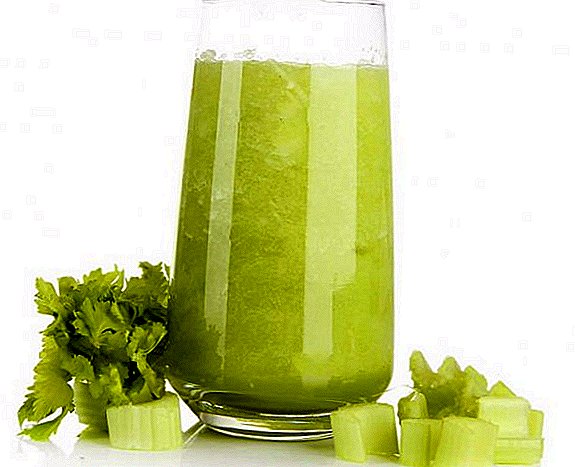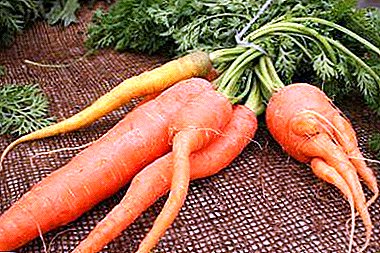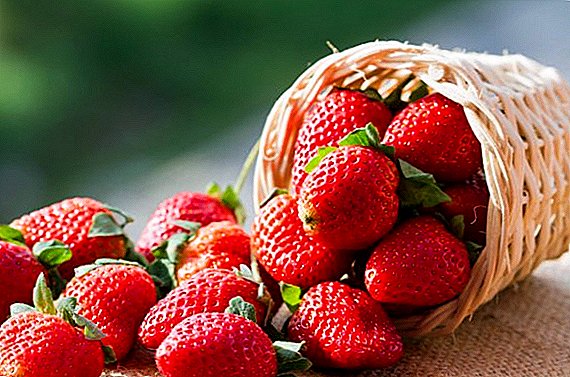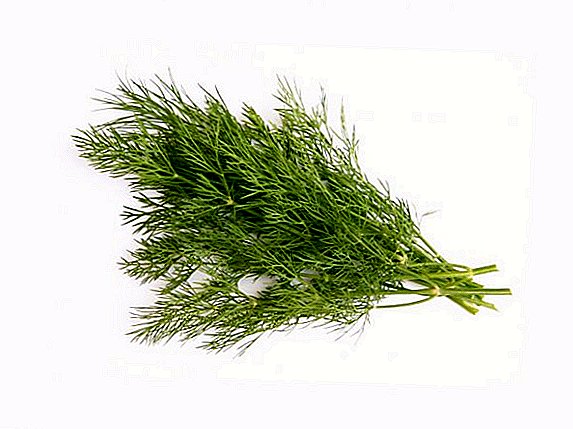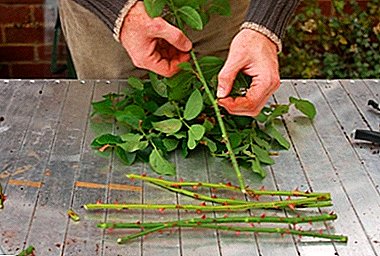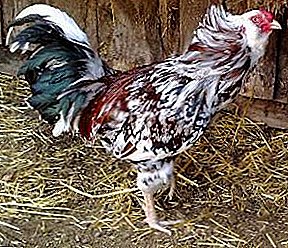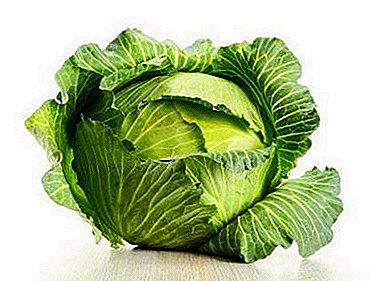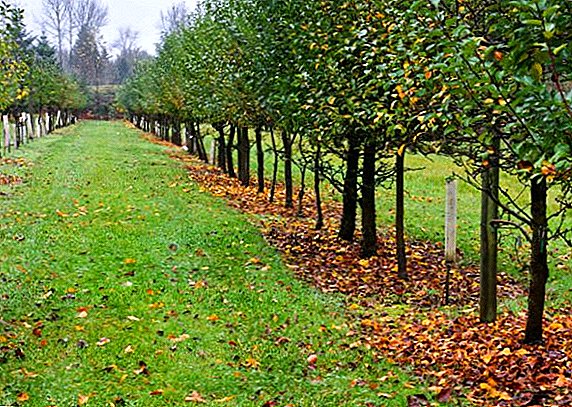 In order to grow a garden of fruit trees on your site, it is necessary not only to determine the place and plants, but also to take into account the main nuances, such as planting scheme, hole size, planting and planting, which will be considered in this article.
In order to grow a garden of fruit trees on your site, it is necessary not only to determine the place and plants, but also to take into account the main nuances, such as planting scheme, hole size, planting and planting, which will be considered in this article.
Garden layout
When a place was chosen for planting seedlings, it is important to determine the scheme for their planting. Planting trees is recommended according to four schemes, which have their own characteristics of plant location, allow you to simplify the process of caring for seedlings and get a bountiful harvest.
Garden for the lazy: practical tips for summer residents.
Quadratic scheme
The most common plantation for planting is quadratic: it allows you to create comfortable conditions for the care of the garden. According to this scheme, trees are planted in even rows. The distance between the trees depends on their type and variety.
Important! It is also necessary to take into account the landing pattern in order to use space rationally, therefore, it is better to arrange trees in a square plot in a quadratic pattern.If dwarf varieties have been chosen, the optimal distance between rows will be 4 m, 2.5 m between trees should be left. Classical species that were grafted on the wild rootstock should be planted apart at a distance of not less than 3.5 m, between rows - 5 m. High and vigorous species should be at a distance of 4 m, 6 m between the rows.
Learn how to properly equip a garden plot, create a landscape design, decorate a front garden, level a plot, make lighting and decorate a winter garden.
The quadratic planting scheme is suitable for trees that are not demanding of illumination, normally carry the penumbra created by adjacent rows. Usually, apple trees of different varieties are planted, some varieties of pears.
Chess
The chess scheme is very similar to a quadratic one, only in each square between four trees one more tree is planted. The scheme is more dense, so it is suitable for planting medium-sized plants with a small crown. If the garden is located on a slope, then the chess scheme will be the best option for planting trees to reduce soil washout.  The chess way of planting allows the trees to receive the maximum amount of light, therefore it is suitable for light-loving plants - plum, apricot, peach, as well as for apple and pear trees. The distance between the trees should be 4 m, it is better to leave 5 m between the rows.
The chess way of planting allows the trees to receive the maximum amount of light, therefore it is suitable for light-loving plants - plum, apricot, peach, as well as for apple and pear trees. The distance between the trees should be 4 m, it is better to leave 5 m between the rows.
Triangular pattern
Planting trees in a triangular pattern is characterized by a more dense arrangement of plants with a large crown. According to the triangular pattern, all trees will be standing, which will make it possible to plant 15% more plants than a quadratic pattern.
Read also about how to sow the lawn correctly, what to plant along the fence and how to plan crops correctly.
To find out the optimal distance between plants, it is necessary to follow the rule of doubling the maximum crown width of an adult tree. For example, if the crown width is 4 m, then there must be a distance of at least 8 m from all sides between the plants.  Thanks to the triangular planting scheme, plants can receive the maximum amount of light. For planting this scheme is suitable cherry, apple, pear, plum, apricot, peach.
Thanks to the triangular planting scheme, plants can receive the maximum amount of light. For planting this scheme is suitable cherry, apple, pear, plum, apricot, peach.
Horizontal layout
The horizontal landing pattern is used when trees are located in a hilly area. Plants in this case are planted in horizontal lines, which allows to reduce the erosion processes of the soil and successfully grow seedlings in uneven areas. For fruit landings choose elevated territory, preferably in the south of the site. It is necessary to plant fruit trees so that the maximum height of the trunks is directed to the north.  Due to this arrangement, the plants are provided with the greatest amount of light. The distance between them in this case should be at least 3 meters, between rows - at least 5. Any fruit trees are suitable for planting in a horizontal way.
Due to this arrangement, the plants are provided with the greatest amount of light. The distance between them in this case should be at least 3 meters, between rows - at least 5. Any fruit trees are suitable for planting in a horizontal way.
Planting a garden
When the planting plan was determined, it is necessary to proceed to the selection and purchase of seedlings, which will take root on the site.
Selection of fruit crops
In order for plants to bear fruit well, you need to be able to choose them correctly. Therefore, pay attention to the recommended growing region, soil and other conditions. There are special varieties that were bred for each region: they easily tolerate frosty winters, different types of soil, and are less sensitive to adverse weather conditions. Consider the basic recommendations for planting trees, normally feeling in mid-latitudes.
Dwarf fruit trees - what they are.
The most popular fruit plant in mid-latitudes is an apple tree. This culture is light-requiring, therefore, it is better to plant it in a well-lit area. Apple trees can grow on gray forest, sod-podzolic soils, chernozems, which are characterized by light texture with a neutral or slightly acidic reaction. The tree does not tolerate excess moisture, so plant it on small elevations, in areas with deep groundwater - not less than 1.5 m in depth.
Did you know? Apple orchards in the world cover 5 million hectares, and every third fruit tree in the world is an apple tree.Pear is recommended to be planted on the southern side of the site, as areas with harsh winters often cause freezing of trees. The site must be chosen well protected from the wind, which is especially important in the winter. Pear grows well on wet soils, groundwater should be no closer than 1 m to the soil surface. The ideal soil for a pear is loamy, sandy or weakly podzolic.
 Cherries prefer warmer regions with plenty of sunshine and heat. Sapling is not recommended to plant in the lowlands, as the cherry has a poor winter hardiness and often freezes. Territory must be chosen well-ventilated - this way you can avoid many diseases of the tree. As for the soil, the cherry prefers fertile soils with a light texture, characterized by high air permeability. Cherry is planted on light and medium loam, which allows you to get the maximum yield.
Cherries prefer warmer regions with plenty of sunshine and heat. Sapling is not recommended to plant in the lowlands, as the cherry has a poor winter hardiness and often freezes. Territory must be chosen well-ventilated - this way you can avoid many diseases of the tree. As for the soil, the cherry prefers fertile soils with a light texture, characterized by high air permeability. Cherry is planted on light and medium loam, which allows you to get the maximum yield.Plant the cherries and plums correctly.
Plum also prefers well-lit areas, so seedlings should be planted on the south side of the site, on moist clay soil with a thick fertile layer and a neutral reaction. Plum also normally grows in the northern regions, but with the condition of compliance with the basic recommendations for planting and caring for the plant. Apricots grow well in mid-latitudes and subtropics in the most illuminated areas with lots of sunlight and heat. Apricot trees must be well protected from the northern winds: they can be placed on slopes and in places that are inaccessible to cold air.  The tree is better to plant on light, well-drained soils. Peaches are planted in the southern regions with a lot of heat and sunlight, because they are unstable to severe frosts that damage fruit buds. Peaches grow well on light loams with high breathability and drainage, a prerequisite is high-quality protection from the wind.
The tree is better to plant on light, well-drained soils. Peaches are planted in the southern regions with a lot of heat and sunlight, because they are unstable to severe frosts that damage fruit buds. Peaches grow well on light loams with high breathability and drainage, a prerequisite is high-quality protection from the wind.
How to choose and buy seedlings
It is important not only to choose the right place for planting seedlings, but also the planting material itself in order to ensure a good survival rate of the tree and to obtain consistently high yields in the future.
Important! Buy seedlings preferably in nurseries, avoiding markets and other dubious places.First of all, it is necessary to pay attention to the age of the tree: it is optimal to acquire planting material of two years of age, older trees have a low survival rate. Look closely at the root system of seedlings - it should be healthy, contain in addition to the skeletal numerous growing roots. Do not buy trees that have knots on the roots, thickenings, growths, nodules, buds or other dubious formations.
 The minimum number of skeletal roots for a two-year seedling is 3, it is preferable to choose seedlings that contain more than 3. Do not buy trees that have gross mechanical damage to the roots created by improperly digging. The height of a two-year-old seedling should be at least 1.5 meters; in healthy trees, there are three lateral branches that are evenly distributed along the trunk. The bark should be smooth, not have any scratches, cracks.
The minimum number of skeletal roots for a two-year seedling is 3, it is preferable to choose seedlings that contain more than 3. Do not buy trees that have gross mechanical damage to the roots created by improperly digging. The height of a two-year-old seedling should be at least 1.5 meters; in healthy trees, there are three lateral branches that are evenly distributed along the trunk. The bark should be smooth, not have any scratches, cracks.Did you know? There is an interesting method for determining the length of storage of a dug tree: you need to squeeze a tree branch between your thumb and forefinger, and if the seedling is fresh, then a light coolness will emanate from the tree, and if the seedling has dried - you will feel the heat.
Preparation of landing holes
Depending on the type of fruit tree, the landing pit is prepared in different sizes and different shapes, but practically all trees are best suited for round holes with sheer walls that can ensure the normal development of the root system. The size of the hole dug in cultivated soil with a deep fertile layer should be about 70 cm in diameter and 70 cm in depth.
Learn how to make a compost pit.
If the tree will be planted on the first developed territory, the size of the pit will increase three times, as it will need to make a sufficient amount of nutrient mixture, which in the future will serve as a reservoir of substances necessary for the normal development of the young seedling. Heavy clay and sandy soils imply digging a hole in the size of 1 m in diameter and 1 m in depth. Experienced gardeners are advised to dig wider and less deep holes in thick clay soil, so that water does not stagnate in their lower layers - this will have a detrimental effect on the roots of plants.  If the planting of plants will be made in the spring, then the holes must be dug in the autumn period of the previous year, if the planting will be done in the fall, the hole will be dug out in May-June. This is necessary so that the fertilizers that have been applied to the soil are well mixed and matured, that is, they form the necessary microbiological environment.
If the planting of plants will be made in the spring, then the holes must be dug in the autumn period of the previous year, if the planting will be done in the fall, the hole will be dug out in May-June. This is necessary so that the fertilizers that have been applied to the soil are well mixed and matured, that is, they form the necessary microbiological environment.
Tree planting rules
Depending on the type of fruit tree, there are rules for the size of the pit, planting time and other nuances that need to be considered:
- Apple trees Often planted in the spring, if the seedling is not older than 2 years, in order for the tree to take root over the summer, grow and normally endure wintering. The spring planting should take place in early May - late April, when the ground has already thawed and warmed up a bit. If the seedling is planted in the spring, the pit can be prepared a week before planting. The size of the pit will depend on the soil: if it is quite fertile, then it will be enough 60 cm deep and in diameter, if the soil is poor, then the depth should be at least 70 cm and the diameter 80 cm. Seedlings 3-4 years old can be planted in autumn , because the already hard winter tree is not afraid of winter frosts. Planting is best done at the beginning of October, so that the roots can be strengthened before winter. In the autumn, it is recommended to plant young trees in the southern regions with fertile soil. The pit is dug up the same size as in the case of planting in the spring, but it is prepared a month before disembarking.
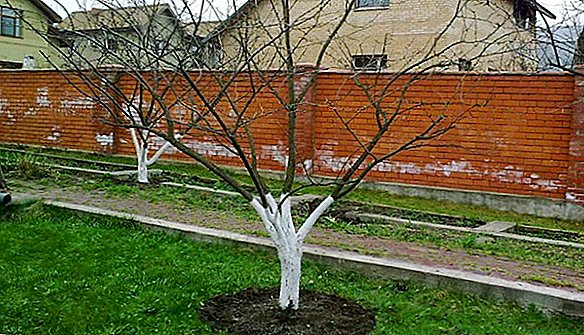
- Pear can be planted both in spring and autumn. Spring planting (at the end of April) eliminates the possibility of death of the tree from frost. It is better to prepare a hole in advance, in the autumn of the previous year. During this time, the soil will sit down, and after planting the seedling, the root collar will not go deep, which guarantees the normal survival of the plant. The width of the pit should be about a meter, and at a depth of about 50 cm. If the soil is poor, then the pit is dug deeper and filled with several buckets of fertile soil. As is the case with the apple tree, the pear is planted in the fall in the southern regions, which allows the seedling to take root normally. In addition, the pear, which was planted in the fall and survived the winter, will be stronger and endure future frost. It is better to dig a hole in spring, the depth of the hole is 50 cm in diameter, diameter is 1 m, and it should be planted in early October.
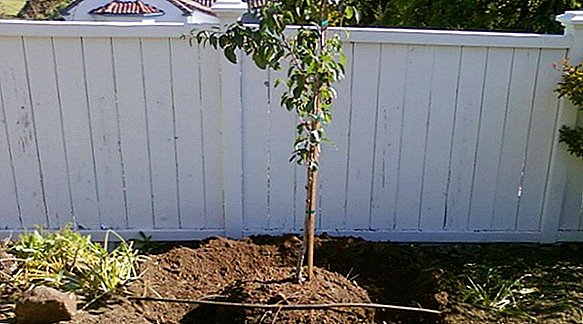
- Apricot in the spring, it is recommended to plant it before buds awaken on the seedling in mid-April. The pit is prepared in the autumn, its minimum size is 70 cm deep and 70 cm in diameter. Preparation of the pit for the autumn disembarkation should be carried out in a month, or even two. Width 1 m is required, and depth is 80 cm. The beginning of October is considered to be the best time for disembarking.

- Cherry Often planted in spring (end of April), especially in the middle belt and the northern regions, because over the summer the seedling grows up, it becomes stronger and tolerates wintering normally. The hole should be dug in advance, better in the fall, its depth should be at least 50 cm, diameter - 80 cm. In the fall, planting cherries is practiced only in the southern regions, sometimes in the middle lane. The optimal time for planting is the end of September, so that before the first frosts strike, the tree is stronger. The pit is prepared in the spring, the size is the same as in the case of landing in the spring.
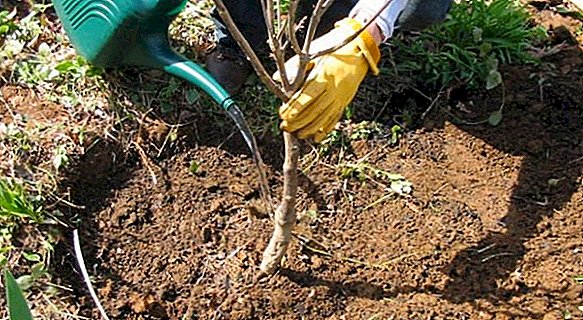
- Peach is a heat-loving plant, so even in the southern regions planting is carried out in the spring (end of April). The pit is prepared in advance, the best - in the fall, the size of the pit should be at least 70 cm deep and 1 m in diameter.

- Plum prefers spring planting in the middle lane and in the northern regions, in the southern regions planting of seedlings is most often practiced in the autumn. Spring plum planted in late April in a prepared pit. It is better to cook a hole in the fall, add organic fertilizers to it, which will overflow for a sufficiently long period of time and create ideal conditions for the young seedling. The pit should be at least 60 cm deep and 70 cm wide, and more. In the fall, in early October, the plum is planted in a pit that was dug in the spring and fertilized with organic matter; the size of the pit is 60x70 cm.
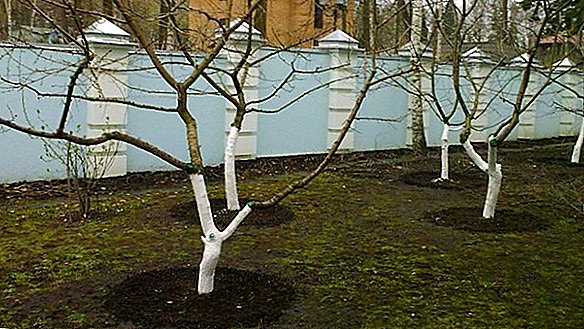
Did you know? Unlike other fruit trees, plum cannot be found in nature in the wild. Plum was obtained by crossing thorns and plums more than 2 thousand years ago.
How to care for newly grown trees
When the seedlings are planted in the soil, at first you should pay special attention to regular watering. The frequency of irrigation depends on weather conditions and regular precipitation. The minimum amount of water that must be poured under one tree is 20 liters at a time. Watering should be 1 time in 2-4 weeks. It is recommended to check the ground for moisture with a stick: if the soil surface is 20 cm dry, it's time to water the seedling.
The place around the seedling should be mulched - this is necessary in order to create a favorable environment for the root system, retain moisture in the summer, slow down the growth of weed vegetation. Mulch is poured with a sufficiently thick layer (15 cm) at a distance of 1-2 meters from the trunk - sawdust and straw are used. The near-stem circle is regularly loosened and weed free. It is especially important to loosen the soil after watering, when it is compacted from water. Loosening is done to a depth of no more than 5 cm in order not to damage the young roots.  Be sure that the young tree for the winter should be warmed, so that it normally endured frosts. Warming the trunk will also help protect the bark from the raids of rodents, which in the winter, it gnaws, which leads to the death of the seedling. The procedure is carried out in early November, tying the lower part of the trunk with fir branches not less than 70 cm in height. Whitewashing trees produce 2 times a year - in the fall and spring. Autumn whitewashing is done on a sunny, not rainy day at the end of September, and spring whitewashing should be carried out during a period of slight frost, when the first insects had not yet appeared.
Be sure that the young tree for the winter should be warmed, so that it normally endured frosts. Warming the trunk will also help protect the bark from the raids of rodents, which in the winter, it gnaws, which leads to the death of the seedling. The procedure is carried out in early November, tying the lower part of the trunk with fir branches not less than 70 cm in height. Whitewashing trees produce 2 times a year - in the fall and spring. Autumn whitewashing is done on a sunny, not rainy day at the end of September, and spring whitewashing should be carried out during a period of slight frost, when the first insects had not yet appeared.
Important! Very young seedlings, which have still greenish, not formed bark, can not be whitened, as this can lead to disruption of metabolic processes.For whitewashing prepare a mixture of hydrated lime - 2 kg, copper sulphate - 0.2 g, water - 10 liters. The bark is pre-prepared, clearing from diseased areas, moss. It is possible to whiten with use of the painting brush. Whitening is carried out from the lower part of the trunk, gradually rising to the skeletal branches. Skeletal branches whitish at 30 cm from the branch point.
How to decorate a new garden
To make the garden with fruit trees even more beautiful, you can add additional decorative elements, plant some plants and build paths, so we will take a closer look at each item. 
How to build paths in the garden
The easiest way to arrange the track from the backfill with the base. Для этого вырывают канаву на 10 см в глубину, выкладывают геотекстилем, бока укрепляют бордюрной лентой. В подготовленный участок насыпают гальку или щебень. Более сложным вариантом является сооружение прочного покрытия в виде твёрдых заливных дорожек.
Сделайте на даче дорожку из спилов дерева, бетона и тротуарной плитки.
The base of such a coating is concrete, on which decorative elements in the form of natural stone, paving slabs are laid. The path is recommended to be laid on a small elevation, so that it is 5 cm higher than the rest of the soil level, which will keep it from the effects of rainwater and soil deposition.
What plants can be planted in the garden
The most popular garden decoration are flowers. They are able to complement other plants and create a complete picture. Popular annual flowers for planting in the garden include marigolds, asters, kosmey, zinnias, petunias. Among the perennials can be identified bells, daisies, carnations, forget-me-nots, pansies. 
Additional elements of decor
As additional elements of the decor in the garden may be wooden fences, which protect small flowerbeds, garden figures, decorative stone. On the edges of the tracks, you can install decorative lanterns. You can make jewelry with your own hands from wood or from already unnecessary elements of life - dishes, furniture, plastic bottles.
We decorate the cottage: crafts, garden sculptures, a bed of stones and wheel tires.
Thus, to arrange a garden of fruit trees is not an easy task, but if you follow the basic rules and follow the recommendations that are described in detail in our article, this will help avoid many common mistakes.








